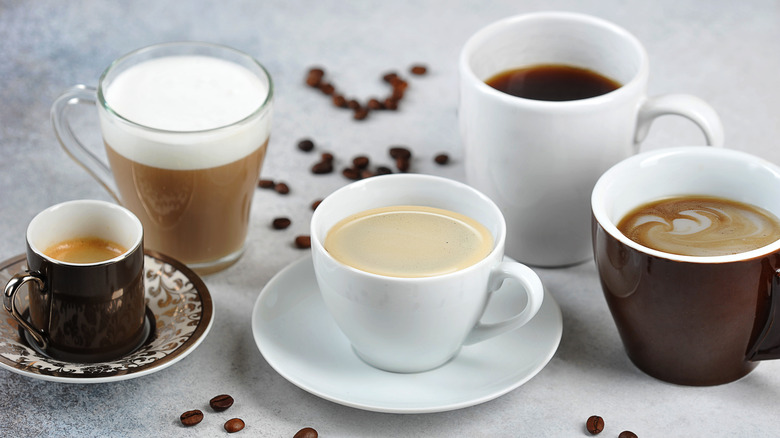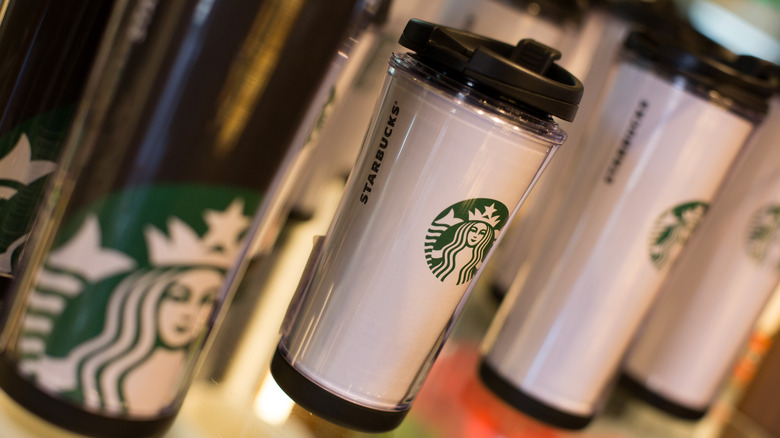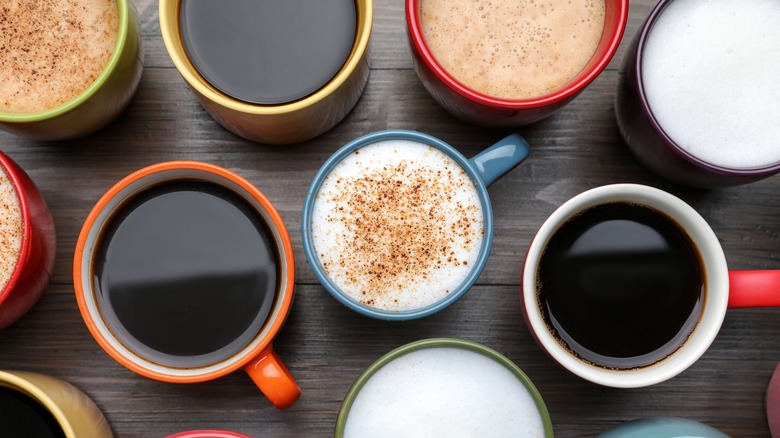How Your Favorite Cup Could Be Making Your Coffee Taste Worse
Regular coffee imbibers tend to embrace a favorite vessel, typically a mug or cup designed for holding hot liquids. It must be sturdy, heat tolerant, and easy to handle, typically by way of a curvy extended handle. And it doesn't hurt if the pattern or cup design is artsy or uplifting. However, there's more at play than meets the conscious eye, some of which can actually be affecting how the coffee tastes.
Taste buds get a lot of cred for flavor awareness, but your brain taps into many other senses to stimulate the ultimate perception of delicious coffee. From vision to smell, taste, touch, and temperature, that cup in your hand is a vessel through which they all flow.
The material used to create your favorite coffee cup is crucial, followed by the influence of color and shape. Finding the perfect combination may just bring you to the threshold of java nirvana.
Cup composition influences taste
There's much said about aroma affecting flavor – for good reason. As UConn Health explains, most of a food's flavor comes from its smell. When that's applied to coffee, the type of cup holding it can influence the taste, simply by its composition.
For example, plastic, though easily accessible and unbreakable, tends to absorb odors. So reusing it over and over again can impart lingering odors and flavors into each newly brewed cup of coffee. Ceramic, on the other hand, has no flavor of its own and is solid enough to prevent flavor absorption of the liquid it holds. It's considered the most neutral choice for a coffee cup, allowing the inherent flavor of the coffee beans to stand on its own.
Ceramic, especially in double-walled cups or mugs, efficiently retains heat, meaning your java drink stays appealing and warm for longer periods, increasing the perception of good flavor. It's also sturdy and easy to clean in a standard dishwasher.
Though ceramic is generally the premium option for coffee drinking, stainless steel appeals to those dashing out the door with coffee in hand. It's the most popular material used in reusable travel mugs, providing durability and adequate heat retention. But stainless steel can affect the taste of coffee, due to either chemical reactions with the coffee itself or potential leaching of stainless steel finishes. With careful shopping, you can find coffee tumbler brands using medical-grade 18/8 stainless steel that resists flavor transfer and metallic aftertastes.
Color and shape deepen sensory effects of coffee cups
Vision plays a pivotal role in the overall coffee experience, from the packaging of coffee beans to the color of your drinking cup. Ceramic, and its counterpart bone-china or porcelain coffee cups, provide handy showcases for enticing designs. Floral prints can evoke gentle responses and expectations of mellow coffee blends, while vivid, solid colors may create sensory perceptions of bold, lively flavors.
When colors trigger visual cues, the perceptions can inform the taste experience. Solid white cups are favored by some coffee purists, bringing attention to the liquid itself and the visual juxtaposition of white against intense earthy-brown flavor complexities. Glass cups have similar potential by exposing the rich coffee hues, but they tend to lose heat more quickly than ceramic, leading to the flavor loss that occurs as the coffee cools.
In some studies, pink has shown a perceived sweetness, especially in a rounded cup. Tulip-shaped cups, which round gently upward, concentrate coffee aromas at the top, where they flood olfactory senses as the cup reaches your lips. Likewise, if a cup is too narrow or too full, there's not enough room for the aromas to gather, losing that sensory anticipation of something wonderful heading your way.



